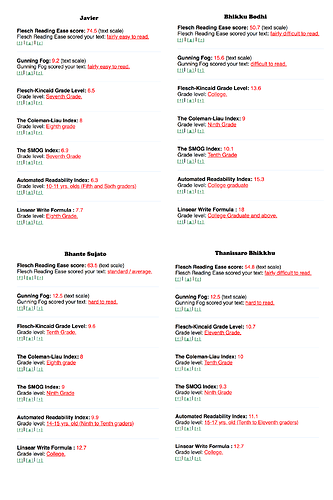Some recent threads in this site have gotten me thinking about varying translations and how their usefulness depends on the reader’s capacity and interest. I have been looking into how there are so many different Bible translations, made to suit different readers. I have also noticed over time how a lot of people can be turned off by the repetitive style of the suttas (myself included), leading them to read other more modern Buddhist material. I have also thought that the best sutta translation is going to be the one people will actually read. So I decided, on a whim, to try my hand at a more vernacular, conversational and “free” rendition of the Dhammacakkappavattana Sutta. It’s supposed to be easier for beginners to read, especially those who would be turned off by the formal style of the suttas while keeping the basic meaning and ideas. My main ideas for a ‘conversational’ sutta rendition is that I should try to make them:
*Not “literal” or “word-for-word”, but capturing the meaning and intent of the text (“thought for thought”). This means that the translation will lean towards the end of the spectrum of translation (Word for word <-> Thought for thought <-> Paraphrase). For Bibles, the more “free” style includes versions like “The Living Bible” and “The Message”. More info here: Why We Have Different Bible Translations | ReasonableTheology.org
*In as simple language as possible, with simple sentences, the idea is that schoolchildren, and non-fluent speakers could tackle it.
*As little repetition as possible, meant for comprehension of the basic message, not to keep the oral repetitive structure of the text.
*Should be conversational, like a passage depicting a dialoge from a novel. I want to give it the feel as if the Buddha is a friend talking to the reader.
*No ‘Buddhist hybrid english’, very few pali terms (only widely known ones, such as Buddha, Dharma, Nirvana).
Ok, so here is what I have so far. I would appreciate some feedback. If there is interest for this kind of thing I might be inspired do some more “free” renditions of the really important suttas in the future.
Turning the Dharma wheel
I heard that one time the Buddha was at a deer park in Isipatana, near Benares. Speaking to five seekers, he said:
There are two extremes not suitable for seekers. The first is seeking sensual pleasure, which is low, useless, trivial and worthless. The second is punishing the body, which is painful, low, and useless. By avoiding these two, I woke up to the middle way and attained knowledge, peace, and nirvana.
This middle way is the noble eightfold path which is right view, right intent, right speech, right action, right livelihood, right effort, right mindfulness, and right immersion. This is how you wake up and attain nirvana.
Now, these are the four noble truths.
Suffering means being born, getting old and dying. It’s sadness, grieving, stress and pain. It’s when something happens that we don’t want, or when we lose something we love, and also when we want something and can’t get it. Basically, suffering is the five groups.
The second truth is the source of suffering. This is when craving leads to a further greedy existence, and you keep trying to look for pleasure everywhere. It’s got three forms, craving for pleasures, craving to exist and craving to end existence.
This brings us to the third one, which is the total fading away of craving. It’s letting go, not clinging, and being craving free.
Finally, the fourth truth is the way that takes you to the end of suffering, which is the noble eightfold path.
This was the vision and knowledge that I realized on my own. I saw that suffering has to be fully recognized and I fully recognized it. I realized that the source of suffering has to be let go of, and that I had let it go. I knew that the cessation of suffering follows from that, and I experienced this cessation of suffering. Also, I saw that the eightfold path has to be cultivated and that I had done that. That was my insight, my clear vision.
As long my knowledge and vision was not pure in these three ways and twelve aspects, I didn’t claim to be perfectly awakened. But when I accomplished this, then I said “I am perfectly awakened”. In this universe filled with gods, demons, humans, ascetics and priests, I realized an unshakable freedom and knew that this is my last birth, with no future lives left.
This is what the Buddha said, the five seekers rejoiced and venerable Koṇḍañña had a vision of the Dharma that was stainless and pristine. He said “whatever arises has to end”.
With this turning of the Dharma wheel, the gods of the earth shouted across the universe. And this shout was repeated by the Tusita gods, the Yama gods, the happy gods, the maker gods, the controller gods and the gods of Brahma. All of them shouted:
“The Buddha has turned the Dharma wheel at the deer park of Isipatana! And it can’t be rolled back by gods, ascetics, demons or anyone else!”
This went up all the way to the highest realms, and the universe shook and trembled. A glorious light which was immeasurable appeared, one superior to the gods themselves.
The Buddha said: Koṇḍañña got it! He really knows it! And so, Koṇḍañña was then known as “Koṇḍañña who knows”.


